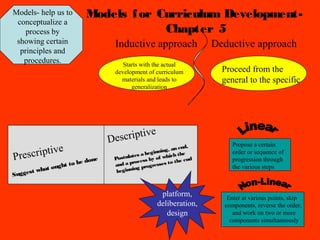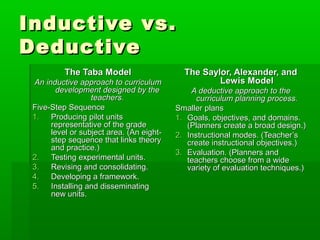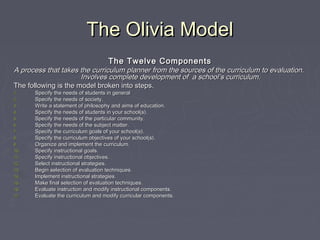The document summarizes different models for curriculum development:
1) The Tyler Model is deductive, prescriptive, and linear, identifying objectives from students, society, and subject matter.
2) The Taba Model uses an inductive approach with teachers developing pilot units and revising them.
3) The Saylor, Alexander, and Lewis Model is deductive, starting with broad goals and moving to specific objectives and evaluation.
4) The Olivia Model involves 12+ steps from identifying needs to evaluating instruction and the curriculum.



